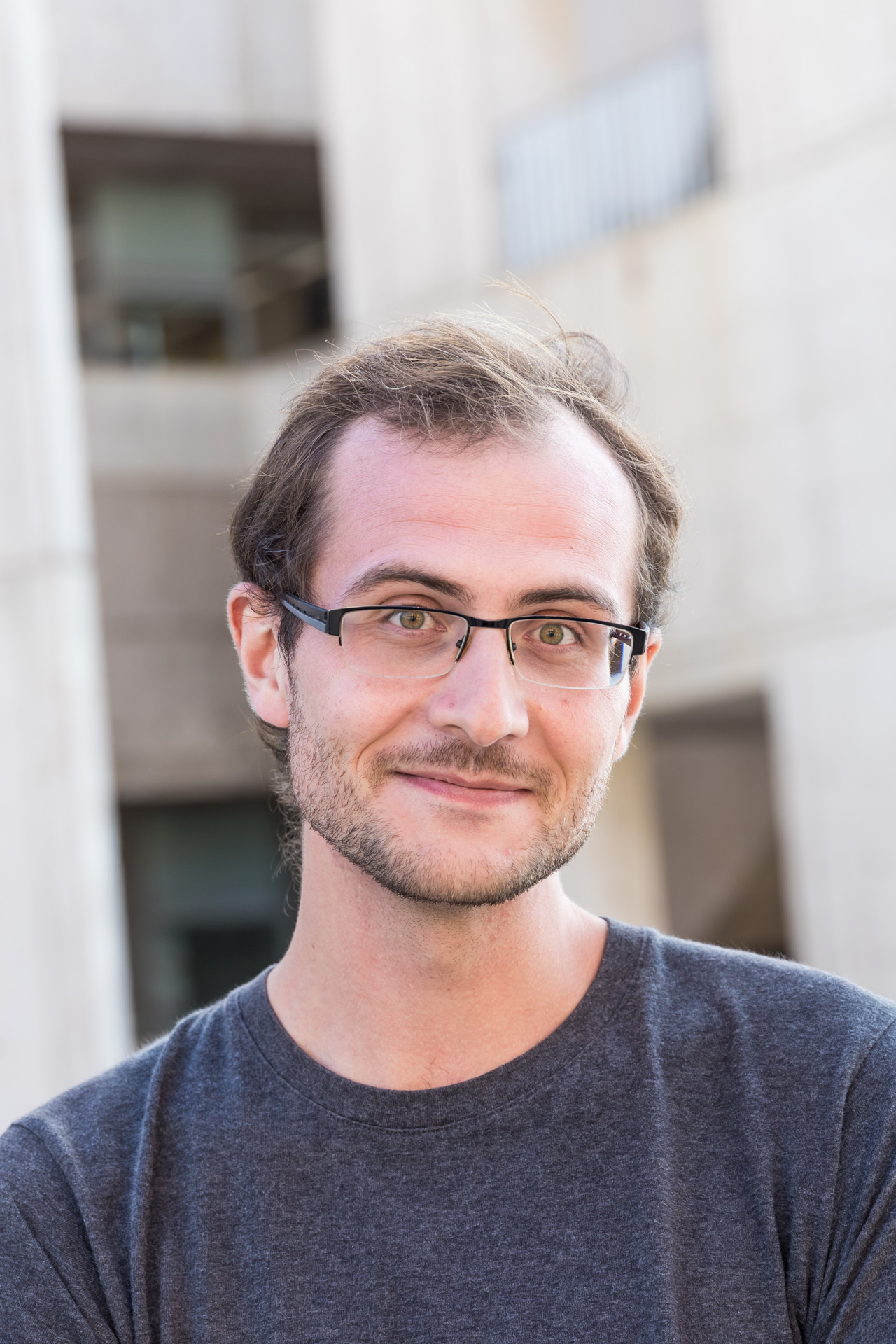Beyond the Paper: A Conversation with Dr. Hugo Calligaro
Interviewed by Dr. Paige N. McKeon, October 4, 2023
In their recent eNeuro publication, Calligaro and colleagues investigated the connectivity of the central pacemaker of the brain: the hypothalamic suprachiasmatic nucleus (SCN). This hub for entraining circadian rhythm is known to be cellularly heterogeneous, but there is little research characterizing SCN neuron connectivity. The authors used a Cre-dependent reporter targeting the mitochondria of melanopsin-expressing retinal ganglion cells (mRGCs), which integrate photic information to synchronize circadian rhythms with environmental light cycles, so that they could visualize them with electron microscopy. This method revealed the 3D structure of these cells as well as the connectome organization of the core and shell of the SCN. It led to the discovery that the core and shell integrate mRGC inputs differently, with the shell being more densely innervated. These unprecedented findings challenge the current viewpoint that photic information from the retina targets mainly the SCN core.
"To young research investigators, I would emphasize the importance of curiosity and persistence.”

What drew you to pursue this particular line of research?
My interest with the circadian rhythm appeared during studies. I was fascinated by this precise regulation of everything and how it was shaped by evolution. I initially worked on the light regulation of the retinal clock during my PhD which led me almost naturally to study the effect of light on the brain and in particular on the suprachiasmatic nucleus.
What are your future career goals and how have your lab and research experiences shaped these goals?
My future career goals involve continuing my research in neurophysiology to continue to increase my knowledge about circadian rhythms and related topics. My research experiences have been instrumental in shaping these goals by providing me with access to cutting-edge technology, collaborative opportunities, and a diverse scientific community.
“Research can be challenging, with experiments often leading to unexpected results or setbacks. Embrace these challenges as opportunities for growth and learning.”
What advice do you have for young research investigators?
To young research investigators, I would emphasize the importance of curiosity and persistence. Research can be challenging, with experiments often leading to unexpected results or setbacks. Embrace these challenges as opportunities for growth and learning. Collaborate with colleagues, seek mentorship, and, more than anything, maintain a healthy work-life balance.
You previously studied in France. How has the transition been working in the US as a post-doctoral candidate? What kinds of challenges have you had to overcome and have you felt supported?
Transitioning from Europe to the US has been an interesting experience. To my surprise, the overall research culture is not really different here. The biggest challenge for me has been regarding language. Thankfully, I felt supported by my colleagues who provided guidance and encouragement throughout this journey.
Did the outcomes of the experiments in this paper surprise you? What challenges or surprises did you run into along the way and how did you overcome them?
The outcomes of the experiments in this manuscript did surprise me. The SCN is a region that has been widely studied for its role in regulating circadian rhythms. So, to highlight a different distribution of retinal inputs than previously assumed, we had to develop a particularly rigorous methodology to ensure the validity of the results. Thankfully, we had the opportunity to work in close collaboration with experts in the field.
“Improving the transparency of review and promoting diversity in the review panels process are in my opinion the first steps to improve reviewing process and restore the relationship between researchers and publishers.”
In your view, what is/are the most valuable contribution(s) of this paper to the field and where do you see the project going?
In my opinion, the most valuable contributions of this manuscript to the field lie in our detailed exploration of the suprachiasmatic nucleus's connectivity and how retinal input is integrated in this network. This is an essential step towards understanding the precise functioning of our central circadian clock. This work paves the way for future studies and may inspire further research on the interactions between the retina and the brain's timekeeping center.
How was your experience with the eNeuro review process? How do you feel about the science review process in general and what do you think could be done to improve it?
I had very little interaction with the eNeuro review process as this article was submitted to Journal of Neuroscience and transferred to eNeuro after being reviewed. The article was then immediately accepted in eNeuro, within a day. The reason why the article did not deserve to be published in the Journal of Neuroscience was never explicated and particularly disappointing. Improving the transparency of review and promoting diversity in the review panels process are in my opinion the first steps to improve reviewing process and restore the relationship between researchers and publishers.
Dr. Hugo Calligaro is currently in the Panda Lab at Salk Institute.
Read the full article:
Ultrastructure of Synaptic Connectivity within Subregions of the Suprachiasmatic Nucleus Revealed by a Genetically Encoded Tag and Serial Blockface Electron Microscopy
Hugo Calligaro, Azarin Shoghi, Xinyue Chen, Keun-Young Kim, Hsin Liu Yu, Brian Khov, Benjamin Finander, Hiep Le, Mark H. Ellisman, and Satchidananda Panda
FOLLOW US
POPULAR POSTS
TAGS
CATEGORIES


 RSS Feed
RSS Feed




